| Full model name: | Canon EOS 5D Mark IV |
|---|---|
| Resolution: | 30.40 Megapixels |
| Sensor size: | 35mm (36.0mm x 24.0mm) |
| Kit Lens: | n/a |
| Viewfinder: | Optical / LCD |
| Native ISO: | 100 - 32,000 |
| Extended ISO: | 50 - 102,400 |
| Shutter: | 1/8000 - 30 seconds |
| Dimensions: | 5.9 x 4.6 x 3.0 in. (151 x 116 x 76 mm) |
| Weight: | 31.4 oz (890 g) includes batteries |
| Availability: | 09/2016 |
| Manufacturer: | Canon |
| Full specs: | Canon 5D Mark IV specifications |
5D MARK IV SUMMARY
The Canon 5D Mark IV offers a ton of new features and performance upgrades, but keeps things modest and familiar with its similar yet refined design. The fourth iteration of Canon's popular 5D series gains a new, higher-res sensor, a faster processor, a full touchscreen interface, built-in wireless connectivity and Cinema 4K video recording. Aimed at professionals and advanced enthusiasts, the 5D Mark IV offers features and performance for a variety of subject matter, both with still photography and videography, making it a well-designed, highly versatile DSLR.
PROS
Superb image quality from RAW files; Improved dynamic range; Excellent high ISO performance; Fast 7fps burst rate with unlimited JPEG buffer; High-quality cinema 4K video; Built-in Wi-Fi; Dual Pixel CMOS AF is very good.
CONS
JPEG files look soft at default settings; 1/200s flash sync; 4K video codec is cumbersome; 29:59 continuous video recording limit.
PRICE AND AVAILABILITY
On sale since September 2016, the Canon 5D Mark IV is available in three configurations: US$3,500 body-only; US$4,400 for a kit that includes the EF 24-70mm f/4 L lens; and a second kit paired with the updated EF 24-105mm f/4L IS II USM lens for US$4,600.
IMAGING RESOURCE RATING
5.0 out of 5.0
Canon 5D Mark IV Review
by Mike Tomkins, Dave Etchells, Dave Pardue, William Brawley, Zig Weidelich and Eamon Hickey
Preview originally posted: 08/25/2016
Last updated: 02/17/2017
Preview originally posted: 08/25/2016
Last updated: 02/17/2017
Updates:
08/29/2016: First Shots & photo shoot Gallery images posted
08/29/2016: A day in the studio with Parish Kohanim posted
08/31/2016: Image Quality Comparisons special supplement posted
09/29/2016: Performance test results posted
10/12/2016: Gallery Images updated
10/21/2016: Field Test Part I posted
01/05/2017: Print Quality Analysis posted
02/02/2017: Field Test Part II posted
02/17/2017: Review Conclusion posted
08/29/2016: First Shots & photo shoot Gallery images posted
08/29/2016: A day in the studio with Parish Kohanim posted
08/31/2016: Image Quality Comparisons special supplement posted
09/29/2016: Performance test results posted
10/12/2016: Gallery Images updated
10/21/2016: Field Test Part I posted
01/05/2017: Print Quality Analysis posted
02/02/2017: Field Test Part II posted
02/17/2017: Review Conclusion posted
For years now, Canon's 5D-series DSLRs have been incredibly popular with photographers and videographers alike. The 5D, 5D II and 5D III each hit a sweet spot in terms of price and performance for a full-frame camera, but after debuting in March 2012, the Mark III was getting a bit long in the tooth.
Now, the 5D Mark IV is here to take the 5D lineup into the future, and it sports a wide range of significant updates throughout, many of them borrowed from the flagship 1D-series or even marking firsts for Canon or the industry as a whole. No doubt about it, this is one extremely exciting and important camera!
Canon 5D Mark IV Product Tour
|
A brand new, higher-res image sensor and faster processor
Perhaps the most important change of the bunch is a brand-new full-frame image sensor. In place of the earlier 22.3-megapixel chip used in the 5D III, the Canon 5D IV's sensor now has an effective resolution of 30.4 megapixels. It also adds support for the company's Dual Pixel CMOS AF system, which we'll come back to in a moment.
Accompanying the new image sensor is an upgraded image processor, something that has allowed Canon to make a step forward in performance despite the significant increase in pixel count. The new DIGIC 6+ image processor replaces the earlier DIGIC 5+ chip, and was previously seen in the Canon 1DX II. (That model included twin DIGIC 6+ processors, however, where the 5D IV makes do with just the one.)
Swifter performance and a wider default sensitivity range
Canon rates its new camera as capable of up to seven frames per second in burst shooting, up from the six fps provided in the earlier 5D III. As well as the higher resolution and swifter performance, the new image sensor and processor together allow an improvement in sensitivity. Or at least, in that portion of the sensitivity range which Canon feels is good enough to merit availability by default. The overall expanded sensitivity range of ISO 50 to 102,400-equivalents is unchanged from the 5D III, but the Canon 5D IV allows everything from ISO 100 to 32,000-equivalents by default. The earlier 5D III, by contrast, topped out at ISO 25,600-equivalent unless you enabled ISO sensitivity expansion.
The Canon 5D IV has updated metering and autofocus systems, too
To better take advantage of its new sensor and processor, the 5D Mark IV also sports updated metering and autofocus sensors.
In place of the earlier 63-zone dual-layer iFCL metering sensor borrowed from the 7D, the Canon 5D IV now uses a 153,600-pixel, 252-zone RGB+IR metering sensor. This new design was borrowed from the 7D II, and thanks to its much greater resolution, it should allow for better, more accurate face recognition and tracking in particular. It should also deal with hard-to-meter subjects better thanks to its improved granularity.
The new autofocus sensor, meanwhile, retains the same 61-point count (complete with 41 cross-type points) as in the earlier 5D III. The change in the new High Density Reticular AF II chip -- the earlier variant lacked the 'II' designation -- is that the AF sensor in the Canon 5D IV now has wider coverage, better low-light sensitivity and improved performance.
To put a number on the improvement in low-light AF, where the 5D III had a lower limit of EV -2 to 18, the 5D IV will be able to focus down to EV -3 with its center point and an f/2.8 maximum aperture. And in live view mode, it will focus in even dimmer conditions, all the way down to -4 EV.
And as for the coverage improvement, the Canon 5D IV's AF points now cover 24% more of the image frame horizontally, and 8% more vertically.
Dual Pixel CMOS AF with a touch-screen (and its not just for movies!)
Like the Canon 1DX II before it, the EOS 5D Mark IV now sports Canon's clever Dual Pixel CMOS AF technology. In a nutshell, what this does is to allow for phase-detection autofocus across much of the image frame, either in live view shooting or during movie capture. And just like its flagship sibling, the Canon 5D IV includes a touch-screen to help you get the most from this new feature.
But where the 1DX II limited use of that touch-screen to use during movie capture and in playback mode, there are no such limitations on the 5D IV. Instead, you'll be able to use the touch-screen to specify your subject for autofocus either in movie mode or in live view shooting.
And now, Dual Pixel RAW arrives to let you subtly fine-tune focus post-capture, too
And not just that, but the Dual Pixel CMOS AF tech is also being used in an entirely new (and we have to say, very clever) way in the 5D IV, courtesy of what Canon is calling Dual Pixel RAW.
It's such an interesting and exciting new feature that we've devoted an entire section of this review to it, which you can read here. In a nutshell, though, what it allows is for minor post-capture adjustments to autofocus, bokeh and ghosting. You can also combine adjustments to all three, if you like.
Much more on this brand-new tech can be found in our Dual Pixel RAW Insights section below.
Ever more capable movie capture including in-camera 4K and high frame-rate video
The 5D III was already a favorite of videographers, and for good reason. Recognizing that, Canon has really worked to make the 5D Mark IV an even more capable video shooter. We've already mentioned the availability of full-time phase-detection autofocus during video capture, but what else is new?
Perhaps the most significant change in this area is in-camera 4K video capture, just as in the flagship Canon 1DX II. And just as in that camera, there's one important thing to note: The sole compression type for 4K video is Motion JPEG.
That's both good and bad news. Since there's no interframe compression, image quality in 4K mode is good. However, file sizes will also be spectacular. (Although not quite as much so as is possible with the 1DX II, because where that camera tops out at 60 frames per second in 4K capture, the 5D IV is limited to 30 fps capture.)
Just as in the 1DX II, the Canon 5D IV allows you to extract single high-quality 4K frames at their native 8.8-megapixel resolution in-camera, as well.
And even if you're not shooting 4K yet, the Canon 5D IV brings other video improvements for you. For one thing, you can now shoot Full HD (1080p) at up to 60 frames per second, instead of the earlier 30p limit. And if you're willing to drop the resolution to HD (720p), you'll get 120 fps capture for either silky-smooth motion, or up to a 4x slow-motion effect without dropping your output below 30p.
There's also a new HDR movie function, which allows true high dynamic range shooting. This shoots frames at 60 fps, then combines them to create a Full HD output video at 30 frames per second. And if you want to record video externally, there's also a clean video output via HDMI, although this is at a maximum of Full HD resolution, not 4K, sadly.
Wireless networking and geolocation no longer need clumsy external accessories
If you had the need, the Canon 5D III could be connected to wireless networks to share photos and videos, and could automatically tag your photos with their capture location. Both functions needed external accessories that were expensive and radically changed the camera's handling.
The Canon 5D IV fixes all this, sporting Wi-Fi wireless networking and GPS without the need for external accessories. Instead, these features are built into the camera itself. For Android users, the Wi-Fi connectivity comes complete with NFC for quick-and-easy pairing.
Incidentally, it's worth noting that even if you don't want GPS for its geolocation capabilities, it's also handy for keeping your camera's clock updated. This could be particularly useful if you're shooting multiple cameras, and need their internal clocks to be synced extremely accurately.
A redesigned, better-sealed body, but you'll need to buy a new battery grip
Although it has almost the exact same layout as its predecessor in terms of the controls and features, the Canon 5D IV has a newly-designed body. That means you'll also need a new battery grip accessory, if you're upgrading from the earlier 5D III. In place of that camera's BG-E11 battery grip, the Canon 5D IV requires a new BG-E20 grip.
On the plus side, Canon says that it has taken the opportunity to improve the 5D Mark IV's weather-sealing. It's now said to be similar to the 7D Mark II in this area, with the controls better-sealed than they were in the 5D III.
One change of note to the controls is the addition of a new AF Area Select control on the back of the camera. It's customizable, so if you don't want to use it for this function, you can repurpose it for something else. Oh, and if you're looking for the remote control terminal, it's now been moved to the front of the camera.
Highlight Tone PriorityThe Canon 5D Mark IV's Highlight Tone Priority (HTP) option did an excellent job of preserving highlight detail, as shown below. (Mouse over the Off and On links to load the corresponding thumbnail, histogram and crops.)
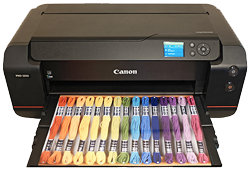 ISO 50/100/200 images all look fantastic and make excellent prints up to 30 x 40 inches and larger. The images in this range are all nearly identical, with sharp detail and vibrant color. 30 x 40 is the largest size we print for our testing, but the 30-megapixel full-frame sensor in the 5D IV could certainly work for larger prints; it just depends on how much you're willing to push its resolving power.
ISO 50/100/200 images all look fantastic and make excellent prints up to 30 x 40 inches and larger. The images in this range are all nearly identical, with sharp detail and vibrant color. 30 x 40 is the largest size we print for our testing, but the 30-megapixel full-frame sensor in the 5D IV could certainly work for larger prints; it just depends on how much you're willing to push its resolving power.
Canon 5D IV Dual Pixel RAW Insights
Is it a post-capture focus adjustment or not?
by Dave Etchells | Posted: 08/25/2016
The Canon 5D Mark IV introduces a new technology called Dual Pixel Raw for the first time. What it amounts to is the ability to shift the apparent focus very slightly after a picture has been taken. Alternately -- or in combination with the focus tweak, if you prefer -- you can make small changes in the bokeh or out of focus areas of the image, or you can reduce ghosting to a degree.
Canon was very careful not to use the word "focus" when describing Dual Pixel Raw to us, saying that they don't want people to get the idea that they can make significant post-focus adjustments in software. Instead, they refer to it as a "micro adjustment". That obviously begs the question of what's being adjusted, and as long as you promise not to tell anyone, we'll go ahead and say that it's focus. (Or bokeh, or ghosting reduction, as noted above.) But do see the full discussion below, to understand why Canon is being careful not to use the "f-word" ;-)
A very small adjustment is possible after tripping the shutter
The amount of the post-capture (sort-of-focus) adjustment is indeed very small, though; think in terms of fractions of an inch at a shooting distance of several feet. The application that most immediately came to mind would be a portrait shot captured with a very wide-aperture lens, where the plane of focus was just barely off. Think in terms of a photo where the model's eyelashes were in sharp focus, but the catchlight in her eye was soft; that's what we're talking about. (The trick to having a portrait look sharp when the DOF is well under an inch is to make sure the catchlights in your subject's eyes are sharp. If the catchlights are crisp, people looking at the picture will feel that it's a "sharp photo".)
Canon 5D Mark IV Dual Pixel RAW Demonstration1,920 x 1,080, H.264, Progressive, 30 fps
|
The little video clip above gives you some idea of the magnitude of the effect. (Macro shots like this one are another area where the small amount of adjustment might prove useful.) The clip is a screenshot of a beta version of Canon's DPP software, showing the extent of the +/- adjustment available.
The trade-off: Hefty file sizes
Dual Pixel Raw does come at a price, though; the raw files saved in this mode are twice the size of normal, weighing in at a hefty ~72 MB each, and as far as we know can only be processed by an updated version of Digital Photo Professional. (It's possible that third-party raw converters may be able to read out the data for each frame separately, but we doubt they'll be able to execute the effect unless Canon licenses the technology to them. Adobe Camera Raw and Lightroom? We'll see, but we'd say don't hold your breath.
How does the 5D Mark IV's Dual Pixel Raw feature work?
The new Raw mode builds upon Canon's excellent Dual-Pixel CMOS AF technology. This advanced on-sensor phase-detection autofocus system has been a mainstay of its higher-end DSLRs ever since the EOS 70D was introduced in July of 2013. The split-pixel design means that every pixel on the image sensor has two halves, one looking left and the other looking right. This in turn means that every pixel can serve as a phase-detection pixel, potentially usable for autofocus.
We don't need to go into the workings of phase-detection AF (or PDAF for short) very deeply for this article; Wikipedia has a good overview, and this article has a clever Flash animation which helps you see what goes on in a DSLR as you change the focus.
The basic idea of PDAF is pretty straightforward. When an image is in perfect focus, light rays coming from the right and left sides of the lens meet perfectly at the surface of the image sensor. If the lens is out of focus in one direction, the rays meet and then cross each other in front of the sensor, and if it's out of focus the other way, the rays end up meeting behind the sensor (or would, if the sensor wasn't there.)
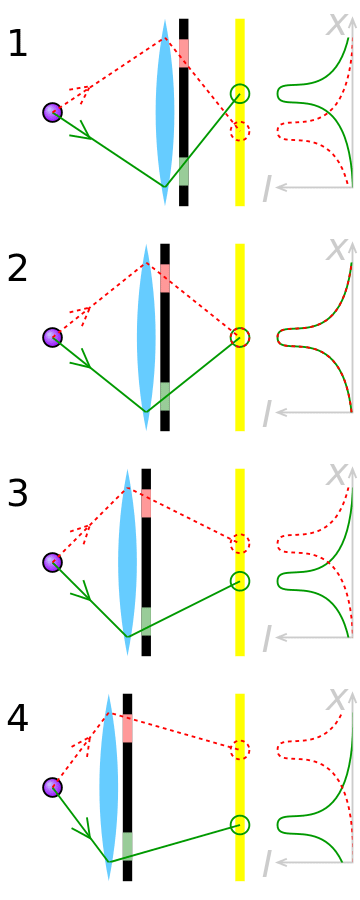 |
Image and caption courtesy of Cmglee / Wikipedia. Used under a Creative Commons CC-BY-SA 3.0 license. Image has been modified from the original. |
Phase-detection autofocus works by looking at the light arriving from each side of the lens separately, comparing the light pattern falling on groups of phase-detect pixels on either side of a centerline. The AF system basically slides the separate sets of pixel data coming from each side of the lens past each other, and looks for how much of a shift is required for the light patterns to match exactly. That shift tells the camera how much the lens needs to be adjusted to achieve focus, and in what direction.
All this is by way of background, to explain what Dual Pixel Raw is all about, and what we think it's doing. The Canon reps we've spoken to as of this writing didn't have deep technical details, but we can speculate a bit about what's going on.
How Dual Pixel Raw works: A speculative answer
Given how phase-detection AF works, and that essentially every pixel on the 5D IV's sensor has two halves, looking in opposite directions from each other, it makes sense that the point of focus could be shifted slightly, with some fancy image processing.
As noted above, if some part of the subject is out of focus, the light patterns falling on the sensor from the left and right sides of the lens will be offset a bit from each other. Normally that's the end of the story, but what if we went back and tried to undo that offset in the image data after the fact? Normal AF processing can determine the amount of offset between the left-looking and right-looking views, so why not actually shift the image data by that amount, to bring the two sides into alignment as they should be? Wouldn't that result in a sharper image?
The answer is yes, at least up to a point. Likewise, we could throw something further out of focus by increasing the offset between the two sets of data.
We're pretty sure that this is what the Canon 5D Mark IV is doing in its Dual Pixel Raw exposure mode. Rather than combining data from the two halves of each pixel before saving the image to the memory card, it saves two separate images, one using just the right-looking half-pixels, the other using just the left-looking ones.
Later, the two sets of data can be analyzed in the same way the AF system would, to find how much offset there is between the two overlaid half-images for each point in the subject. The point of apparent best focus can be changed slightly by shifting the two sets of pixel data relative to each other before recombining them into single, full pixels. Shift the right and left-looking images in one direction before combining them and you'll have changed the apparent plane of focus to be closer to the camera. Shift the half-images in the other direction, and the apparent plane of focus will be further away.
Obviously, there are limits to this. When part of a subject is out of focus, more happens than just the two sets of pixel data shifting relative to each other. The image is blurring radially, not just left to right and up and down, so simple X-Y shifts can't fully compensate for the loss of focus. The whole point spread function is changing, and it's a complex two-dimensional relationship that varies non-linearly depending on the amount and direction of the focus error.
For small adjustments, though, simply shifting the right- and left-looking images relative to each other before combining them can make a noticeable difference. It's only enough to make very small shifts in the apparent focal distance, but as noted above, it can be enough to sharpen the catchlights in a model's eyes or crispen-up important detail in a macro shot.
(Considering the above, it's clear why Canon is being so careful not to use the word "focus" or "focus adjustment" in describing Dual Pixel Raw. It's not remotely a true focus shift, but can do a convincing job of looking like one for small adjustments.)
We'll experiment more with this feature once we get a production sample of the 5D Mark IV and a matching copy of Canon's Digital Photo Professional raw converter to do the processing with. It seems like it could be useful in some situations, but do note that the maximum amount of apparent focus shift you can obtain is quite small, and it comes at the expense of raw files twice the normal size. (They're around ~72 MB at base ISO, vs the already-large 36 MB normal ones). Given how small the maximum adjustment is, it may not be worth the size penalty, except in specific situations. But of course when you need it for critical purposes, it really seems a great tool.
Stay tuned, we'll have more once we've had a chance to experiment with production hardware and software. Meanwhile, kudos to Canon for a clever secondary use of its Dual-Pixel CMOS AF technology!
Canon 5D IV Technical Info
by Mike Tomkins | Posted: 08/25/2016
Body and weather sealing
Although it looks much like the 5D III before it and features almost exactly the same control layout, the Canon 5D Mark IV actually has a newly-designed body. Compared to that of the 5D III, the 5D IV's chassis and external panels are designed both for greater rigidity, and to better-radiate heat during operation. (Most likely, heat output during 4K video capture was a primary concern during development.)
Inside, the 5D IV's chassis consists of aluminum and engineering plastic, while the mirror box is also plastic. On the outside, magnesium alloy is used for front, rear and bottom panels, and Canon says that a new coating on these has better wear resistance.
The company also tells us that the EOS 5D Mark IV is weather-sealed to the same degree as the 7D Mark II, and to a greater level than was the 5D III before it. In particular, sealing around the lens mount, shutter button, video switch, battery and card compartment doors, and the windows for the remote control, self-timer lamp and card access lamp are said to have been improved.
Sensor
At the heart of the Canon EOS 5D IV is a brand-new 30.4-effective megapixel, full-frame image sensor. Compared to the 22.3-megapixel chip in the 5D III, the new one has about 17% higher linear resolution, on paper at least. It's not the highest-resolution sensor in Canon's lineup -- the 51-megapixel chip shared by the EOS 5DS and 5DS R takes that honor -- but it's higher-res than any other Canon DSLR bar those two.
Total resolution of the Canon 5D IV's sensor is 31.7 megapixels, and it has dimensions of 36.0 x 24.0mm. A low-pass filter is included to help combat moiré and false-colors artifacts. And unlike the earlier design, the Canon 5D IV's sensor has on-chip phase detection autofocus pixels, or Dual Pixel CMOS AF in Canon parlance.
Processor
Output from the new image sensor is handled by a DIGIC 6+ image processor. That's the same specification as is used in the EOS-1DX II, but where that camera has twin processors, the EOS 5D IV has just one. By way of comparison, the 5D III used an earlier-generation DIGIC 5+ processor.
ISO
Despite the significant increase in sensor resolution, the Canon 5D IV still shares the same overall sensitivity range as its predecessor. And impressively, a greater proportion of that range is available by default, without the need to enable ISO sensitivity expansion.
By default, a range of ISO 100 to 32,000-equivalents is available, which means you can roam a little higher than the ISO 25,600 default limit for the 5D III. Enable ISO expansions, and the full sensitivity range of ISO 50 to 102,400-equivalents will be available.
Burst performance
Even more impressively, despite a one-third increase in the amount of data included in each photo, the Canon EOS 5D IV is manufacturer-rated to shoot a full one frame per second faster than its predecessor. Where the 5D III topped out at six frames per second to manufacturer ratings, the Canon 5D IV will manage a full seven frames per second, according to its maker. Use of Dual Pixel RAW, Digital Lens Optimizer or Anti-flicker functions will slow this rate somewhat.
According to Canon, at the maximum seven fps capture rate you can expect to capture as many as 19-21 raw frames or 14-16 raw + large/fine JPEG frames in a burst, so long as you're using a sufficiently fast card. (That is to say, either UDMA CompactFlash or UHS-I Secure Digital cards.) If you're shooting solely JPEGs, you should be able to continue for as long as card space and battery power remain. Enabling Dual Pixel RAW shooting will reduce the buffer to just seven frames.
If you don't need quite this much performance, a low-speed continuous shooting mode is also provided, offering a maximum of three fps shooting. There's also a silent continuous shooting mode, which has the same three fps capture rate.
Optics
As a full-frame DSLR, the Canon 5D Mark IV accepts EF-mount lenses, but not the company's sub-frame EF-S or mirrorless-oriented EF-M lenses. Kit lens choices include either the EF 24-70mm f/4 L or EF 24-105mm f/4L IS II USM zoom lenses, or you can opt to buy the camera body-only if you prefer.
Like the 5D III before it, the Canon 5D IV includes the ability to correct for common lens defects with first-party lenses automatically. These include vignetting, chromatic aberration, distortion and diffraction.
Viewfinder
As you'd expect in a DSLR at this pricepoint, the Canon 5D IV includes a thru-the-lens pentaprism optical viewfinder. Coverage is manufacturer-rated at 100% both horizontally and vertically, and the finder has a 21mm eyepoint from the eyepiece lens. Magnification is 0.71x, and a diopter adjustment ranging from -3 to +1 diopters is also included.
Compared to the 5D III, the viewfinder overlay in the 5D IV has been upgraded. It's basically the same Intelligent Viewfinder II system, which uses a monochrome LCD overlay but can also illuminate focus points in red for better visibility against dark backgrounds.
Touch-screen LCD
On the rear panel of the Canon 5D IV is a 3.2-inch, 3:2-aspect LCD monitor with a total resolution of around 1,620,000 dots. It's still an air-gapless Clear View II design with a resin layer that fills the space between the LCD panel and the cover glass, providing better contrast and lower glare. However, the resolution is significantly higher, as the 5D III had only a 1,040,000-dot screen.
Perhaps even more importantly, the LCD is now overlaid with a touch-screen panel. This allows it to be used to indicate your subject for autofocus in live view or movie modes, and to interact with images more intuitively in playback mode.
You can also now adjust the color balance of the LCD, selecting from warm, standard, cool 1 or cool 2 presets.
Metering
The Canon 5D Mark IV also sports an updated metering sensor. In place of the earlier 63-zone dual-layer iFCL metering sensor borrowed from the 7D, the Canon 5D IV now uses a 153,600-pixel, 252-zone RGB+IR metering sensor.
This new design was borrowed from the 7D II, and thanks to its much greater resolution, it should allow for better, more accurate face recognition and tracking in particular. It should also deal with hard-to-meter subjects better thanks to its improved granularity.
Metering modes include AF-linked evaluative, center-weighted average, 6.1% partial and 1.3% spot. The system has a working range of EV 0-20.
Focus
Although the autofocus sensor still includes a total of 61 focus points, of which 41 are cross-type points and the five centermost points are dual cross-types, it's not the same chip as in the earlier 5D III. There are three changes in the new High Density Reticular AF II chip: The Canon 5D IV now has wider coverage, better low-light sensitivity and improved performance.
Where the 5D III had a lower limit of EV -2 to 18, the 5D IV will be able to focus down to EV -3 with its center point and an f/2.8 maximum aperture, while still being able to function all the way up to EV 18. And in live view mode, it will focus in even dimmer conditions, all the way down to -4 EV.
All 61 autofocus points now work down to f/8, allowing use with lens extenders. The dual cross-type points work to f/2.8 on the diagonals, and the 21 points in the center of the array work to f/5.6 horizontally and vertically. The remaining cross types work to f/5.6 horizontally and vertically, and the remaining linear points also work to f/5.6 vertically.
And at the same time, the Canon 5D IV's AF points now cover 24% more of the image frame horizontally, and 8% more vertically.
Canon's Intelligent Tracking and Recognition system is included, and after analyzing information from the metering sensor recognizes both faces and colors, which allows it to assist the AI Servo AF III system with tracking.
In live view or moving shooting, of course, you can't use the dedicated autofocus sensor, and here Canon's Dual Pixel CMOS AF comes into its own. With 80% of the frame covered, this uses autofocus pixels on the image sensor itself, letting you use swift, accurate phase-detection across most of the image frame without needing to lower the mirror first.
And then there's the new Dual Pixel RAW function, which we've covered in depth in its own section of this review.
Mirror and shutter
To handle the uprated performance of the Canon 5D IV, the company has designed a new mirror mechanism to better control vibration.
Shutter life is rated at 150,000 cycles, just as it was for the 5D III. The Canon 5D IV's shutter allows for speeds from 1/8,000 to 30 seconds plus bulb.
Dust removal
Of course, dust is always a concern, especially for interchangeable-lens cameras. Here, the Canon 5D IV retains its predecessor's approach to dust removal: An ultrasonic system that shakes dust free from the low-pass filter which sits atop the sensor. The filter itself has a fluorine coating to try and prevent dust sticking in the first place. And if you get stubborn dust particles stuck above your sensor, Dust Delete data can be recorded to assist in removing signs of dust post-capture, or you can manually clean the sensor.
Exposure and creative
As you'd expect, the Canon 5D III offers a wide range of creative and exposure options.
Available exposure modes include Auto, Program, Shutter- and Aperture-priority and Manual, plus a Bulb mode. There are also three Custom modes, each of which has its own separate position on the mode dial. You can also shoot interval timer, high dynamic range and multiple exposure imagery with the Canon 5D IV, with dedicated functions provided for each.
In interval timer mode, images can be captured automatically for as long as storage space and a power source remain, with an interval anywhere from one second to 99 hours, 59 minutes and 59 seconds. You can specify a number of frames to record to a maximum of 99 frames, or just have the camera shoot indefinitely until you manually end the exposure series.
In the newly-added HDR mode, the camera will create a single image from three separate frames, one with the metered exposure level, one at a brighter level, and one darker. You can choose a step size between exposures of 1, 2 or 3EV, and you can also opt for one of five different image effects for your HDR creation. Handheld shooting should also be possible, as the Canon 5D IV will microalign the frames for you before creating your HDR merge.
In multiple exposure mode, up to nine frames can be layered with either additive, average, bright or dark stacking, and if you need to stack more than nine exposures, you can do so by starting from an existing raw file, then saving the result of your exposure as another raw file, ready to continue where you left off. It's clumsy, but it works.
Canon's EOS Scene Analysis System is still included in the 5D IV, incidentally, but now has a new trick up its sleeve: It can now detect and correct for flickering light sources when shooting your images. Other features carried over from the 5D III include a selection of seven Picture Styles, Highlight Tone Priority and Auto Lighting Optimizer functions.
Movie
The Canon 5D III was already a very capable video shooter, and the 5D IV includes quite a few upgrades in this area. We've already mentioned the availability of full-time phase-detection autofocus during video capture, but what else is new?
Perhaps the most significant change in this area is in-camera DCI 4K (4096 x 2160) video capture, just as in the flagship Canon 1DX II. And just as in that camera, there's one important thing to note: The sole compression type for 4K video is Motion JPEG.
That's both good and bad news. Since there's no interframe compression, image quality in 4K mode is good. However, file sizes are also be spectacular. (Although not quite as much so as is possible with the 1DX II, because where that camera tops out at 60 frames per second in 4K capture, the 5D IV is limited to 30 fps capture.)
Just as in the 1DX II, the Canon 5D IV will allow you to extract single high-quality 4K frames at their native 8.8-megapixel resolution in-camera, as well.
The Canon 5D IV captures a straight crop of the sensor in 4K video mode, using a 4096 x 2160 pixel region in the center. This works out to a 1.64x crop compared to the full width of the sensor or 1.74x relative to the full 3:2 area of the sensor. Full HD and HD modes capture data from the entire width of the sensor, so there is no additional crop factor other than the 16:9 aspect ratio.
Even if you're not shooting 4K yet, the Canon 5D IV brings other video improvements for you. For one thing, you can now shoot Full HD (1080p) at up to 60 frames per second, instead of the earlier 30p limit. And if you're willing to drop the resolution to HD (720p), you'll get 120 fps capture for either silky-smooth motion, or up to a 4x slow-motion effect without dropping your output below 30p.
There's also a new HDR movie function, which allows true high dynamic range shooting. This shoots frames at 60 fps, then combines them to create a Full HD output video at 30 frames per second. And if you want to record video externally, there's also a clean video output via HDMI, although this is at a maximum of Full HD resolution, not 4K, sadly.
Wi-Fi, NFC and GPS built-in
The Canon 5D III could be connected to wireless networks to share photos and videos, and could automatically tag your photos with their capture location. However, both functions needed clumsy external accessories that were expensive and radically changed the camera's handling.
The Canon 5D IV fixes all this, sporting Wi-Fi wireless networking and GPS without the need for external accessories. Instead, these features are built into the camera itself. For Android users, the Wi-Fi connectivity comes complete with NFC for quick-and-easy pairing.
The GPS system, meanwhile, is compatible with not only the American GPS system, but also Russia's GLONASS and the Japanese QZSS system. As well as tagging images with their capture location and orientation, the 5D IV can also record GPS track logs. And even if you don't want GPS for its geolocation capabilities, it's also handy for keeping your camera's clock updated. This could be particularly useful if you're shooting multiple cameras, and need their internal clocks to be synced extremely accurately.
Storage
The Canon 5D IV stores images on either Compact Flash or Secure Digital cards, including support for both the higher-speed UDMA CF cards and UHS-I SD cards, as well as the higher-capacity SDHC / SDXC cards. Images can be saved in either compressed JPEG or 14-bit raw formats, or both simultaneously.
Connectivity
Wired connectivity in the 5D IV includes USB 3.0 Super Speed data, a Type-C Mini HDMI high-definition video output, 3.5mm microphone and headphone jacks, an N3-type wired remote socket, a flash sync terminal and a hot shoe. The infrared RC-6 remote release is also supported.
Power
Power comes courtesy of a proprietary LP-E6N lithium-ion battery pack, while the earlier LP-E6 type used in the 5D III is also compatible. Battery life is rated at 900 shots on a charge when shooting through the viewfinder to CIPA testing standards. In live view mode, this plunges to just 300 shots. With the BG-E20 battery grip accessory attached and a second battery installed, you'll get 1,800 shots through the viewfinder or 600 in live view mode.
Canon 5D Mark IV Optics
Viewfinder Test Results
Accuracy
Excellent accuracy from the optical viewfinder and LCD in Live View mode.
Excellent accuracy from the optical viewfinder and LCD in Live View mode.
| 70mm, Optical | 70mm, LCD Live View |
The Canon EOS 5D Mark IV's optical viewfinder accuracy is excellent, showing essentially 100% coverage with practically no offset or tilt. Live View mode accuracy using the LCD monitor is also excellent, with about 100% coverage in our test.
Canon 5D Mark IV Image Quality
Color
Saturation & Hue Accuracy
Realistic saturation levels with excellent hue accuracy.
Realistic saturation levels with excellent hue accuracy.
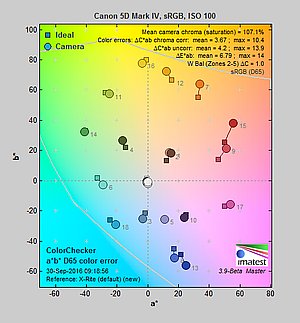 | |||
ISO Sensitivity
| |||
| In the diagram above, the squares show the original color, and the circles show the color that the camera captured. More saturated colors are located toward the periphery of the graph. Hue changes as you travel around the center. Thus, hue-accurate, highly saturated colors appear as lines radiating from the center. Mouse over the links above to compare ISOs, and click to load a larger version. | |||
Saturation. The Canon 5D Mark IV produces images with saturation levels that are slightly less pumped (ie., more accurate) than most cameras at default settings, though still very pleasing. Dark reds are boosted the most, with orange, dark greens, dark browns and dark blues pushed a little, while cyans, yellow and light green are slightly muted. Mean saturation is 107.1% (7.1% oversaturated) at base ISO, a little lower than average these days. Mean saturation is quite stable across the ISO range, though, varying from a minimum of 106.8% at ISO 12,800 to a maximum of 109.6% at ISO 102,400. which is a pretty tight range. Most consumer digital cameras produce color that's more highly saturated (more intense) than found in the original subjects. This is simply because most people like their color a bit brighter than life.
Skin tones. The Canon 5D Mark IV produces pleasing, natural-looking Caucasian skin tones in our tests when using auto white balance in simulated daylight. Darker skin tones show a small nudge toward orange, but lighter tones are more pinkish and healthy-looking. Very good results. Where oversaturation is most problematic is on Caucasian skin tones, as it's very easy for these "memory colors" to be seen as too bright, too pink, too yellow, etc.
Hue. As we've come to expect from Canon, the 5D Mark IV's hue accuracy is excellent when manual white balance is used (as it always is for these results). There are the usual shifts in cyan toward blue (though actually quite small), red toward orange, orange toward yellow and yellow to green, but all are quite minor. Average "delta-C" color error at base ISO is 3.67 which is much better than average. Delta-C color error increases with sensitivity, but remains better than average even at the highest ISOs. Hue is "what color" the color is.
| See full set of test images with explanations See thumbnails of all test and gallery images | ||
Sensor
Exposure and White Balance
Indoors, incandescent lightingDefault Auto and Incandescent settings both struggled with household incandescent lighting, though Manual white balance worked well. Slightly higher than average exposure compensation required.
| Auto White Balance (Ambient Priority) +0.7 EV | Auto White Balance (White Priority) +0.7 EV |
| Incandescent White Balance +0.7 EV | Manual White Balance +0.7 EV |
Indoors, under incandescent lighting, the Canon 5D Mark IV's default Auto as well as Incandescent white balance settings struggled, producing very warm orange/yellow color casts. The Canon 5D Mark IV's White Priority option for Auto white balance resulted in a much more neutral color balance, however it was still a bit warm and reddish in our test. The Manual (custom) white balance setting produced accurate results. The Canon 5D Mark IV required +0.7 EV exposure compensation for this shot, which is slightly higher than the +0.3 EV average among the cameras we've tested. (Our test lighting for this shot is a mixture of 60 and 100 watt household incandescent bulbs, a pretty yellow light source, but a very common one in typical home settings here in the U.S.)
Outdoors, daylightVery good color and dynamic range with good exposure accuracy.
| Auto White Balance, +1.0 EV | Auto White Balance, 0 EV |
The Canon 5D Mark IV required +1.0 EV exposure compensation to keep the mannequin's face reasonably bright, while the average needed for our"Sunlit" portrait shot is about +0.7 EV. We preferred skin tones with Auto white balance slightly better than Manual, as they were a little pinker, but both settings were quite good. Despite the deliberately bright, harsh lighting, very few highlights were blown in the mannequin's white shirt and shadows are quite detailed with low noise, indicating very good dynamic range, much better than we're used to seeing from previous generation Canons. The Far-field shot (above right) is a bit cool, but exposure is excellent with the camera clipping few highlights and retaining good detail in the shadows.
Resolution
~3,200 lines of strong detail from a JPEG, about the same from RAW.
~3,200 lines of strong detail from a JPEG, about the same from RAW.
Our laboratory resolution chart showed sharp, distinct line patterns up to just over 3,200 lines per picture height horizontally and to about 3,200 lines vertically. Some may argue for higher numbers, but lines begin to merge at this resolution, and some aliasing artifacts in the form of moiré patterns can be seen as low as about 2,600 lines. Complete extinction of the pattern did not occur before the 4,000 line limit of our chart. An Adobe Camera Raw converted .CR2 file shows similar resolution as the in-camera JPEG, but it also produced more moiré and false colors. Use these numbers to compare with other cameras of similar resolution, or use them to see just what higher resolution can mean in terms of potential detail.
Sharpness & Detail
Slightly soft images with default sharpening, but with noticeable sharpening artifacts around high-contrast elements. Minor to moderate detail loss due to noise reduction processing even at low ISOs.
Slightly soft images with default sharpening, but with noticeable sharpening artifacts around high-contrast elements. Minor to moderate detail loss due to noise reduction processing even at low ISOs.
Sharpness. The Canon 5D Mark IV's 30-megapixel full-frame sensor captures very good image detail when coupled with a sharp lens, though default JPEG images are a bit soft. (Keep in mind Canon has decided to keep an optical low-pass filter in the 5D Mark IV to reduce aliasing artifacts at the cost of slightly reduced sharpness, unlike most competing models which have gone the other way.) Despite the slightly soft images, the 5D Mark IV's default sharpening setting generates visible edge-enhancement artifacts in the form of obvious sharpening halos around high-contrast edges, as shown in the crop above left. Edge enhancement creates the illusion of sharpness by enhancing colors and tones right at the edge of a rapid transition in color or tone.
Detail. The crop above right shows some detail loss due to noise suppression in darker areas and in areas with low contrast, perhaps just a little more than we're accustomed to seeing from a full-frame digital SLR at base ISO. Still, a good performance for a 30-megapixel model, with very low chroma noise. Noise-suppression systems in digital cameras tend to flatten-out detail in areas of subtle contrast. The effects can often be seen in shots of human hair, where the individual strands are lost and an almost "watercolor" look appears.
Aliasing Artifacts. The Canon 5D Mark IV is equipped with an optical low-pass filter, however it must be pretty weak as some aliasing artifacts such as moiré patterns can be seen in some of our test shots. This is quite common these days, though, as a lot of ILCs no longer include optical low-pass filters to maximize per-pixel sharpness and resolution.
In-Camera JPEGs: Standard vs Fine Detail Picture Style settingThe 5D Mark IV offer Canon's Fine Detail Picture Style first seen on the Canon 5DS R and 5DS. Below is a comparison with the default Standard Picture Style.
Base ISO (100)
| |
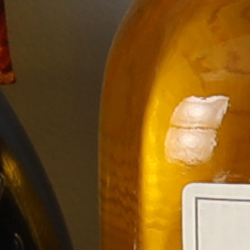 |  |
 |  |
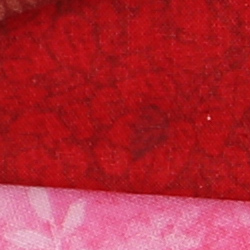 | 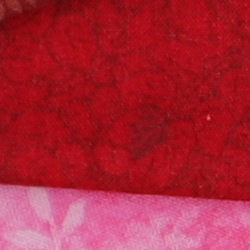 |
Camera JPEG, defaults
|
Camera JPEG, Fine Detail
|
In the table above, we compare the Canon 5D Mark IV's default Standard Picture Style setting (left) to its Fine Detail preset at base ISO. Like the 5DS/R, the Canon 5D Mark IV offers users much more flexibility in sharpening than other EOS models, allowing you to adjust not only the "Strength" (from 0 to 7) but also the "Fineness" (0 to 5) and "Threshold" (0 to 5) operators. We believe these parameters correlate to unsharp mask options for strength, radius and threshold available in photo editing software such as Photoshop, although we don't know what the equivalent units might be.
The Fine Detail Picture Style preset boosts the Sharpness Strength operator one notch (to 4 out of 7) while dialing down the Fineness (1/5) and Threshold (1/5) operators to their minimum compared to Standard which defaults to Sharpness: 3/7, Fineness: 4/5 and Threshold: 4/5. The result is improved, more natural-looking rendering of fine detail along with less obvious sharpening halos than the default Standard setting. Interestingly, moiré is also less visible in our red-leaf swatch. However, noise is more visible in flatter areas, and contrast is lower, making the Fine Detail image appear to have less "pop" than the default Picture Style. There also appear to be minor differences in color, even though Color Tone, Saturation and Contrast settings are identical between these two Picture Styles presets. Given the flexibility in settings, though, you may be able to find a better combination than the defaults compared above.
RAW vs In-Camera JPEGsAs noted above the Canon 5D Mark IV produces JPEG images with very good detail, but that are somewhat soft with visible sharpening halos. With a good RAW converter, additional detail can often be extracted with fewer sharpening artifacts. See below:
In the table above, we compare a best quality in-camera JPEG taken at base ISO using default noise reduction and sharpening (on the left) to the matching RAW file converted with Adobe Camera Raw 9.1 via DNG Converter 9.6 using default noise reduction with some strong but tight unsharp masking applied in Photoshop (300%, radius of 0.3 pixels, and a threshold of 0).
Looking closely at the images, we can see ACR extracts additional detail that isn't present in the default JPEG from the camera, particularly in the red-leaf and pink swatches where the fine thread pattern is likely treated as noise by the JPEG engine and thus blurred away. Fine detail in the mosaic crop is also improved, but as is often the case, the conversion isn't as clean and smooth looking, with more noise that can be seen for instance in the flatter areas of the bottle crop. You can of course apply stronger noise reduction (default ACR NR used here) to arrive at your ideal noise versus detail tradeoff. Also notice sharpening halos aren't nearly as strong as the default camera output. Still, not bad in-camera default JPEG processing, but as usual you can do noticeably better by shooting in RAW mode and using a good RAW converter.
ISO & Noise Performance
Excellent high ISO performance for a full-frame sensor.
Excellent high ISO performance for a full-frame sensor.
Default High ISO Noise Reduction
| ||
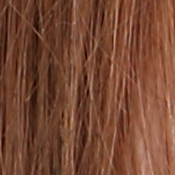 | 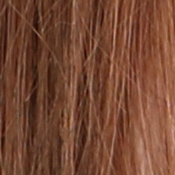 | 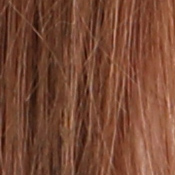 |
| ISO 50 | ISO 100 | ISO 200 |
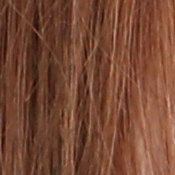 | 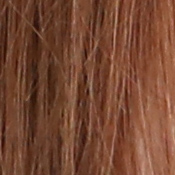 | 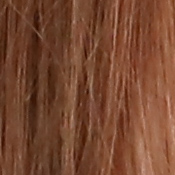 |
| ISO 400 | ISO 800 | ISO 1600 |
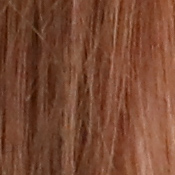 | 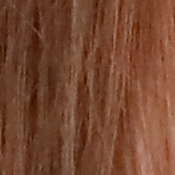 |  |
| ISO 3200 | ISO 6400 | ISO 12,800 |
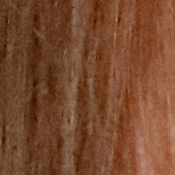 | 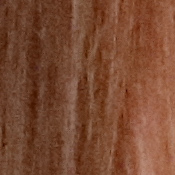 | 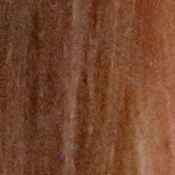 |
| ISO 25,600 | ISO 32,000 | ISO 51,200 |
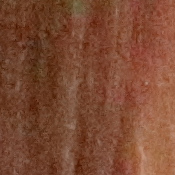 | ||
| ISO 102,400 | ||
Images are very clean and detailed up to ISO 800, with a only a minor loss in image quality as ISO rises within this range, though signs of noise reduction are visible even at base ISO. At ISO 1600 luminance noise and blurring become noticeable resulting in a more evident drop in image quality, though fine detail is still excellent and chroma noise is well-controlled. ISO 3200 is a bit grainier but chroma noise remains low and fine detail is still quite good. ISO 6400 is of course noisier with stronger blurring due to noise reduction, but a lot of fine detail remains intact and chroma noise is still low. ISO 12,800 is still pretty detailed with reasonable luma noise and fairly low chroma noise, but ISO 25,600 and higher show a more rapid decline in image quality with progressively stronger luma noise and blurring, although chroma noise remains well-controlled up to the native ISO of 32,000. Extended ISO of 51,200 is pretty noisy but the noise grain is still fairly tight and chroma noise is only an issue in darker areas and shadows. The top ISO of 102,400 is very grainy and contains a lot of ugly chroma noise blotches though overall color and saturation remain surprisingly good for the sensitivity.
See the Print Quality section below for our evaluation of maximum print sizes at each ISO setting.
A note about focus for this shot: We used to shoot this image at f/4, however depth of field became so shallow with larger, high-resolution sensors that it was difficult to keep important areas of this shot in focus, so we have since started shooting at f/8, the best compromise between depth of field and sharpness.
Extremes: Sunlit, dynamic range and low light tests
Somewhat high default contrast yet very good dynamic range in JPEGs. Very good low-light performance, though conventional autofocus didn't work as well in low light as we'd hoped.
Somewhat high default contrast yet very good dynamic range in JPEGs. Very good low-light performance, though conventional autofocus didn't work as well in low light as we'd hoped.
| +0.7 EV | +1.0 EV | +1.3 EV |
The Canon 5D Mark IV produces images with moderately high contrast. The mannequin's face was far too dim at the default exposure and a few too many highlights were blown with +1.3 EV, so we preferred the image with +1.0 EV exposure compensation overall, even though the face is still a touch dim. But despite the bright appearance, +1.0 EV resulted in only a few clipped highlights in the shirt and flowers, a lot less than we're used to seeing from previous-generation Canon sensors, indicating much better dynamic range than its predecessor. Shadow detail is excellent as well, with noticeably lower noise levels compared to its predecessor. Bottom line: While the Canon 5D Mark IV's default tone curve still results in a darker face than we'd like to see in this shot, its improved sensor delivers noticeably better usable dynamic range.
Because digital cameras are more like slide film than negative film (in that they tend to have a more limited tonal range), we test them in the harshest situations to see how they handle scenes with bright highlights and dark shadows, as well as what kind of sensitivity they have in low light. The shot above is designed to mimic the very harsh, contrasty effect of direct noonday sunlight, a very tough challenge for most digital cameras. (You can read details of this test here. In actual shooting conditions, be sure to use fill flash in situations like the one shown here; it's better to shoot in open shade whenever possible.)
Highlight Tone PriorityThe Canon 5D Mark IV's Highlight Tone Priority (HTP) option did an excellent job of preserving highlight detail, as shown below. (Mouse over the Off and On links to load the corresponding thumbnail, histogram and crops.)
Highlight Tone Priority (+1.3 EV)
| |
| Highlights |  |
| Shadows(Levels boosted to reveal noise.) |  |
| Histogram |  |
Both shots above were captured at the same exposure with +1.3 EV exposure compensation to intentionally blow some highlights, the only difference being that HTP was enabled for the second shot which necessarily increases the ISO to 200; part of how HTP works. As you can see, the thumbnails, histograms and crops above clearly show superior highlight preservation when HTP is enabled, with very little impact to the brightness of shadows and midtones. If you look closely at shadows (the levels in shadow crops above are heavily boosted to reveal noise that would be difficult to see otherwise), you'll notice an increase in noise is the price you pay when ISO is boosted from 100 to 200, though as mentioned previously, noise in the shadows is pretty low and has improved over the Mark III.
Above you can see Highlight Tone Priority at work in our Far-field shot. As expected, highlights are toned-down preserving the few that were lost without HTP enabled, with little impact to midtones and shadows.
Automatic Lighting OptimizationLike previous Canon EOS models, the 5D Mark IV offers three selectable levels of Automatic Lighting Optimization (ALO), plus Off. In fully automatic (Scene Intelligent Auto) ALO is automatically enabled and it's available in P, Tv and Av exposure modes. Mouse over the links below to load the associated thumbnail and histogram, and click on the links to load full resolution images.
Automatic Lighting Optimization (0 EV)
| |
 | |
As you can see above, ALO has the effect of shifting shadows and mid-tones in the histograms to the right, brightening them while leaving highlights pretty much as is, though even the High setting still produced an underexposed image. ISO is not boosted for ALO so increased noise is not an issue, though it may be slightly more visible in shadows that have been boosted significantly.
Above is the effect of ALO on our Far-field shot. As you can see, it operated mainly on the shadows and midtones, leaving highlights pretty much intact.
HDR Mode
The Canon 5D Mark IV's HDR feature takes three continuous shots at different exposures and merges them together to create an image with wider tonal range than would be possible with a single exposure. There are three strength settings available (+/-1EV, +/-2EV,+/-3EV), plus Auto, and there are also 5 effects possible (Natural, Art Standard, Art Vivid, Art Bold and Art Embossed). The source images captured are not saved, and RAW mode is not supported.
The Canon 5D Mark IV's HDR feature takes three continuous shots at different exposures and merges them together to create an image with wider tonal range than would be possible with a single exposure. There are three strength settings available (+/-1EV, +/-2EV,+/-3EV), plus Auto, and there are also 5 effects possible (Natural, Art Standard, Art Vivid, Art Bold and Art Embossed). The source images captured are not saved, and RAW mode is not supported.
Above are in-camera HDR Natural results of our Far-field scene (mouse over the links above to load the corresponding thumbnail). As you can see Auto produced very similar to +/-1 EV, and all settings produce a slightly cropped image which is resampled to full resolution, so details are a little softer than the non-HDR image, but quality is otherwise quite good with no noticeable haloing even at the highest setting. Be aware that ghosting can occur when elements of the scene move during the sequence capture, though, as can be seen with the moving flag, leaves and people in some of these shots.
Dynamic Range Analysis (RAW mode)While we once performed our own dynamic range measurements based on in-camera JPEGs as well as converted RAW images (when the camera was supported by Adobe Camera Raw), we've switched to using DxO Labs' results from their DxOMark website. As technology advanced, the dynamic range of modern high-end cameras in some cases exceeded the range of the Stouffer T4110 density scale that we used for our own measurements. DxO's approach based on RAW data before demosaicing is also more revealing, because it measures the fundamental dynamic range of the sensor, irrespective of whatever processing is applied to JPEGs, or to RAW data by off-the-shelf conversion software.
In the following, we use DxO's "Print" dynamic range results, which are scaled based on camera resolution. As the name suggests, this scaling corresponds to the situation in which you print at a given size, regardless of how many megapixels the camera might have. (In other words, if you've decided to make a 13x19 inch print, that's the size you're printing, whether the camera's resolution is 16 or 300 megapixels.) For the technically-minded, you can find a discussion of the reasoning behind this here on the DxOMark website. Also note that DxO Labs uses a signal-to-noise (SNR) threshold of 1 when defining the lower boundary of acceptable luminance noise in their dynamic range measurements, which corresponds to the "Low Quality" threshold of the Imatest software we used to use for this measurement.
Here, we decided to compare the Canon 5D Mark IV's dynamic range to its predecessor, the 5D Mark III, and also to its closest Nikon competitor, the D810. You can always compare other models on DxOMark.com.
As you can see from the above graph (click for a larger version), the Canon 5D Mark IV's dynamic range is markedly improved over the 5D Mark III's, with a peak of about 13.6 EV versus only 11.7 EV, giving the new model an almost two stop improvement at base ISO. The improvement diminishes as sensitivity is increased, however the Mark IV still out-performs the Mark III at the highest ISO, with a dynamic range of 6.2 EV vs 5.4.
The Canon 5D Mark IV's dynamic range still lags behind the class-leading Nikon D810 at low ISOs with the D810 managing almost 14.8 EV at its lower base ISO setting of 64, however the 5D Mark IV catches up quite quickly already at ISO 200, and surpasses the Nikon at higher ISOs with up to about a 3/4 EV advantage at some ISOs.
Bottom line: Very good dynamic range for a full-frame camera and in fact the best performing Canon DSLR to date, with a massive improvement over its predecessor at lower ISOs and better performance than the class-leading Nikon D810 above ISO 200. Click here to visit the DxOMark page for the Canon 5D Mark IV for more of their test results and additional comparisons.
| 1 fc 11 lux | 1/16 fc 0.67 lux | 1/16 fc No NR | |
|---|---|---|---|
| ISO 100 | 2s, f2.8 | 30s, f2.8 | 30s, f2.8 |
| ISO 3200 | 1/15s, f2.8 | 1s, f2.8 | 1s, f2.8 |
| ISO 32000 | 1/160s, f2.8 | 1/10s, f2.8 | 1/10s, f2.8 |
Low Light
The Canon 5D Mark IV performed very well in our low-light tests, capturing bright images at the lowest light level (1/16 foot-candle), even at base ISO (100). As expected, noise increases as ISO goes up and light levels go down, but luminance noise remains quite low and fine-grained at ISO 3200, and chroma noise is well-controlled. Even at the maximum native ISO of 32,000, luma noise is fairly fine-grained and chroma noise is well-controlled, making it very usable sensitivity setting.
The Canon 5D Mark IV performed very well in our low-light tests, capturing bright images at the lowest light level (1/16 foot-candle), even at base ISO (100). As expected, noise increases as ISO goes up and light levels go down, but luminance noise remains quite low and fine-grained at ISO 3200, and chroma noise is well-controlled. Even at the maximum native ISO of 32,000, luma noise is fairly fine-grained and chroma noise is well-controlled, making it very usable sensitivity setting.
We didn't notice any hot pixels except when long-exposure noise reduction was disabled, where you'd expect to see them. We didn't see any signs of heat blooming or banding (fixed pattern noise) either.
Color balance was fairly neutral with Canon 5D Mark IV's Auto white balance setting, just a touch cool at the higher light level, but warming up at the lower light level.
AF low-light limit: In-spec but disappointing
When using the optical viewfinder with dedicated phase-detect AF (center point), the Canon 5D Mark IV's autofocus system was able to focus on our low-contrast AF target down to -1.1 EV unassisted with an f/2.8 lens, which is a little disappointing given Canon's -3.0 EV AF spec. With our high-contrast AF target, though, the 5D Mark IV was able to focus down to -5.6 EV, which is quite good.
When using the optical viewfinder with dedicated phase-detect AF (center point), the Canon 5D Mark IV's autofocus system was able to focus on our low-contrast AF target down to -1.1 EV unassisted with an f/2.8 lens, which is a little disappointing given Canon's -3.0 EV AF spec. With our high-contrast AF target, though, the 5D Mark IV was able to focus down to -5.6 EV, which is quite good.
In Live View mode, the Canon 5D IV's autofocus could focus in lower light, down to -4.1 EV with or low-contrast target, and down to -6.4 EV with our high-contrast AF target, which is excellent.
The Canon 5D IV does not have a built-in AF assist lamp, however it can utilize an external flash's AF assist lamp to focus in complete darkness when the subject is within range and has sufficient contrast.
How bright is this? The one foot-candle light level that this test begins at roughly corresponds to the brightness of typical city street-lighting at night. Cameras performing well at that level should be able to snap good-looking photos of street-lit scenes.
NOTE: This low light test is conducted with a stationary subject, and the camera mounted on a sturdy tripod. Most digital cameras will fail miserably when faced with a moving subject in dim lighting. (For example, a child's ballet recital or a holiday pageant in a gymnasium.) Digital SLRs like the Canon 5D Mark IV do much better than point & shoots, but you still shouldn't expect a quick autofocus lock with moving subjects.
Output Quality
Print QualityExcellent, high-resolution prints at 30 x 40 inches up to ISO 800; Solid print quality with sizable 11 x 14 inch prints at ISO 12,800; Usable 4 x 6 print up to ISO 51,200.
 ISO 50/100/200 images all look fantastic and make excellent prints up to 30 x 40 inches and larger. The images in this range are all nearly identical, with sharp detail and vibrant color. 30 x 40 is the largest size we print for our testing, but the 30-megapixel full-frame sensor in the 5D IV could certainly work for larger prints; it just depends on how much you're willing to push its resolving power.
ISO 50/100/200 images all look fantastic and make excellent prints up to 30 x 40 inches and larger. The images in this range are all nearly identical, with sharp detail and vibrant color. 30 x 40 is the largest size we print for our testing, but the 30-megapixel full-frame sensor in the 5D IV could certainly work for larger prints; it just depends on how much you're willing to push its resolving power.
ISO 400 prints also do very nicely up to 30 x 40 inches. There's an ever-so-slight decrease in very fine detail compared to base ISO prints, but not nearly enough to negatively impact print sizes.
ISO 800 images show extremely minimal, if any, visible noise, but there's a subtle drop in detail in lower contrast areas, such as some of the fabrics in our test shot scene. However, the overall level of detail and minimal noise still lets us call the print size up to 30 x 40 inches, though 24 x 36 inch prints look fantastic.
ISO 1600 prints top out at an impressive 24 x 36 inches. Detail is great up to that size, and noise is extremely minimal with little to no visible graininess.
ISO 3200 images begin to show some visible background/shadow noise, but it's quite well controlled, making prints up to 20 x 30 inches more than acceptable.
ISO 6400 prints look great up to 13 x 19 inches. Shadow noise is more apparent now, and fine detail loss is more noticeable at larger print sizes.
ISO 12,800 images make for excellent prints up to 11 x 14, which is certainly an impressive feat at this ISO, as not many cameras can offer a usable print at such a size at this sensitivity. Any larger, however, and the loss in detail and stronger noise do become an issue.
ISO 25,600 prints begin to suffer from stronger noise and noticeable detail loss, making a 5 x 7 inch print the highest we're willing to accept. However, with careful post-processing, or for less critical applications, an 8 x 10 inch print could be acceptable at this sensitivity.
ISO 32,000 images look practically identical to ISO 25,600 images, and therefore print up 5 x 7 inches, as well.
ISO 51,200 prints are quite noisy and show a significant drop in detail, forcing us to call the maximum print size at 4 x 6 inches, though a 5 x 7 might be usable for less critical applications.
ISO 102,400 images are too noisy, with heavy luminance and chrominance noise, and an overall lack of fine detail for us to call any acceptable print size at this ISO.
With its higher-resolution sensor and updated image processor, the fourth-generation of Canon's popular 5D series of DSLRs makes a very solid showing in our print quality testing. From extended low ISO all the way to ISO 800, the Canon 5D Mark IV is capable of excellent, sharp prints up to 30 x 40 inches. As ISO sensitivity increases, the camera displayed very well-controlled noise characteristics, allowing for some impressively large prints, such as 13 x 19 inch prints at ISO 6400 and 11 x 14 at ISO 12,800. While the native ISO range of the 5D Mark IV stops at ISO 32,000, the camera still managed a usable 4 x 6 inch print at its first expanded ISO of 51,200; however, prints should be avoided at the maximum expanded setting of ISO 102,400.
About our print-quality testing: Our "Reference Printer"
 Testing hundreds of digital cameras, we've found that you can only tell so much about a camera's image quality by viewing its images on-screen. Ultimately, there's no substitute for printing a lot of images and examining them closely. For this reason, we routinely print sample images from the cameras we test on our Canon imagePROGRAF PRO-1000 printer, which we named our "Printer of the Year" in our 2015 COTY awards. Testing hundreds of digital cameras, we've found that you can only tell so much about a camera's image quality by viewing its images on-screen. Ultimately, there's no substitute for printing a lot of images and examining them closely. For this reason, we routinely print sample images from the cameras we test on our Canon imagePROGRAF PRO-1000 printer, which we named our "Printer of the Year" in our 2015 COTY awards.
The Canon PRO-1000 has a lot of characteristics that make it a natural to use for our "reference printer." When it comes to judging how well a camera's photos print, resolution and precise rendering are paramount. The PRO-1000's more than 18,000 individual nozzles combine with an air feeding system that provides exceptional droplet-placement accuracy. Its 11-color LUCIA PRO ink system delivers a wide color gamut and dense blacks, giving us a true sense of the cameras' image quality. To best see fine details, we've always printed on glossy paper, so the PRO-1000's "Chroma Optimizer" overcoat that minimizes "bronzing" or gloss differential is important to us. (Prior to the PRO-1000, we've always used dye-based printers, in part to avoid the bronzing problems with pigment-based inks.) Finally, we just don't have time to deal with clogged inkjet heads, and the PRO-1000 does better in that respect than any printer we've ever used. If you don't run them every day or two, inkjet printers tend to clog. Canon's thermal-inkjet technology is inherently less clog-prone than other approaches, but the PRO-1000 takes this a step further, with sensors that monitor every inkjet nozzle. If one clogs, it will assign another to take over its duties. In exchange for a tiny amount of print speed, this lets you defer cleaning cycles, which translates into significant ink savings. In our normal workflow, we'll often crank out a hundred or more letter-size prints in a session, but then leave the printer to sit for anywhere from days to weeks before the next camera comes along. In over a year of use, we've never had to run a nozzle-cleaning cycle on our PRO-1000.
See our Canon PRO-1000 review for a full overview of the printer from the viewpoint of a fine-art photographer.
*Disclosure: Canon provided us with the PRO-1000 and a supply of ink to use in our testing, and we receive advertising consideration for including this mention when we talk about camera print quality. Our decision to use the PRO-1000 was driven by the printer itself, though, prior to any discussion with Canon on the topic. (We'd actually been using an old Pixma PRO 9500II dye-based printer for years previously, and paying for our own ink, until we decided that the PRO-1000 was the next-generation printer we'd been waiting for.)
|
Canon 5D Mark IV High ISO Noise Reduction
The Canon 5D Mark IV's four High ISO Noise Reduction settings ("High, "Standard", "Low" and "Off") provide good flexibility in choosing how you want to make the trade-off between subject detail and noise levels. The camera also offers a Multi Shot Noise Reduction option which takes 4 shots, and then aligns and merges them into one JPEG image to average out noise.
See for yourself how the Canon 5D IV's "Standard" and "Off" High ISO NR settings compare to RAW without noise reduction under daylight-balanced lighting. (Note that these RAW images also have no sharpening applied, so they are softer than camera JPEGs at low ISOs.) Click on any of the crops below to see the corresponding full-sized image. Since the Canon 5D IV user manual states noise reduction is applied at all ISOs, we've included crops from the base ISO on up.
The Canon 5D Mark IV's default "Standard" High ISO NR setting provides a decent tradeoff between noise and detail, but it is a little heavy-handed, and struggles to maintain low contrast detail in our red-leaf fabric even at moderate ISOs (as many cameras do). We'd probably shoot with lower settings at higher ISOs and reduce noise ourselves with post-processing (or just shoot RAW). Also note how the "Off" setting doesn't disable noise reduction entirely even at low ISOs as is usually the case, though it appears to do a good job at suppressing chroma noise.
Canon 5D Mark IV Performance
Timing and Performance
Very good performance for its class.
| Startup/Play to Record | ||
|---|---|---|
Power on
to first shot |
~0.5 second
|
Time it takes to turn on and capture a shot.
|
Play to Record,
first shot |
~0.2 second
|
Time until first shot is captured.
|
Powering on and taking a shot was fairly quick for a DSLR, at about 0.5 second. Switching from Play to Record mode and taking a shot was faster, at about 0.2 second.
| Shutter Response (Lag Time) | ||
|---|---|---|
| Optical Viewfinder | ||
Full Autofocus
Single-point (center) AF |
0.165 second
|
Time from fully pressing shutter button to image capture. All AF timing measured with a Canon 50mm f/1.8 STM lens.
|
Full Autofocus
Single-point AF TTL flash enabled |
N/A
|
Time to capture while forcing flash to fire. Preflash metering pulses from flash often slow shutter response.
|
Manual Focus
|
0.077 second
|
For most cameras, shutter lag is less in manual focus than autofocus, but usually not as fast as when the camera is "prefocused".
|
Prefocused
|
0.057 second
|
Time to capture, after half-pressing and holding shutter button.
|
| Live View | ||
Prefocused
Live View |
0.057 second
|
Time to capture, after half-pressing and holding shutter button.
|
In terms of the Canon 5D IV's ability to determine that it's properly focused when shooting the same target multiple times (with no change of focus setting between iteration, to remove the impact of lens AF speed), its full autofocus shutter response was good for a pro DSLR. Using the optical viewfinder with a Canon 50mm f/1.8 STM lens (a lens that may not be fast at actually changing focus, but is very fast at focus determination), we measured 0.165 second for full AF lag using single point (center) AF, which is quite fast.
Shutter lag using manual focus was quite good at 77 milliseconds. When "prefocusing" the camera by half-pressing and holding down the shutter button before the final exposure, the 5D IV's shutter lag was very low for a DSLR, at only 57 milliseconds.
The Canon 5D IV's prefocused shutter lag time in Live View mode was also only 57 milliseconds, which is incredibly fast for a DSLR. Note that we no longer test full AF lag in Live View mode for DSLRs, because the lens used usually makes such a huge difference that comparing is pointless. We'll try to comment on real-world Live View AF performance in our shooter's report.
To minimize the effect of different lens' focusing speed, we test AF-active shutter lag with the lens already set to the correct focal distance.
| Cycle Time (shot to shot) | ||
|---|---|---|
Single Shot mode
Large/Fine JPEG |
0.37 second
|
Time per shot, averaged over a few frames.
|
Single Shot mode
RAW + L/F JPEG |
0.37 second
|
Time per shot, averaged over a few frames.
|
Early shutter
penalty? |
No
|
Some cameras don't snap another shot if you release and press the shutter too quickly in Single Shot mode, making "No" the preferred answer.
|
Continuous High
Large/Fine JPEG |
0.14 second (7.0
frames per second); unlimited frames; 2 seconds to clear* |
Time per shot, averaged over 174 shots with no signs of slowing (we'll call that unlimited).
|
Continuous High
RAW |
0.14 second (7.0
frames per second); 19 frames total; 5 seconds to clear* |
Time per shot, averaged over 19 shot buffer capacity, then slowed to an average of 0.36s or 2.8 fps when buffer was full.
|
Continuous High
RAW + L/F JPEG |
0.14 second (7.0
frames per second); 12 frames total; 8 seconds to clear* |
Time per shot, averaged over 12 shot buffer capacity, then slowed to an average of 0.71s or 1.4 fps when buffer was full.
|
Continuous High
Dual Pixel RAW |
0.20 second (5.0
frames per second); 7 frames total; 4 seconds to clear* |
Time per shot, averaged over 7 shot buffer capacity, then slowed to an average of 0.69s or 1.5 fps when buffer was full.
|
Continuous High
Dual Pixel RAW + L/F JPEG |
0.24 second (4.2
frames per second); 6 frames total; 5 seconds to clear* |
Time per shot, averaged over 6 shot buffer capacity, then slowed to an average of 0.84s or 1.2 fps when buffer was full.
|
Flash recycling
|
N/A
|
Flash at maximum output.
|
*Note: Buffer clearing times measured with a 64GB Lexar Professional 1066x UDMA 7 CompactFlash card. Slower cards may produce correspondingly slower clearing times. Slow cards may also limit length of bursts in continuous mode. ISO sensitivity and noise reduction settings can also affect cycle times and burst mode performance.
| ||
Single-shot cycle times were quite fast at under 0.4 second for both best quality JPEGs and RAW+JPEG files. (Note that we no longer test single-shot mode with just RAW files, as the results are usually somewhere in between JPEG and RAW+JPEG modes.)
Full-resolution continuous high mode speeds were very good for a high-res full-frame DSLR. We measured 7.0 frames-per-second no matter the file type, matching Canon's specifications. The 5D IV also has low-speed and silent continuous shooting modes which are both rated by Canon at 3.0 fps, however we did not test those modes in the lab.
Buffer depth for best quality JPEGs appeared limitless with our fast Lexar 1066x UDMA 7 CompactFlash card. When shooting standard RAW files, buffer depth was 19 frames and for RAW+JPEG it was 12 frames before the camera slowed. (Note: The Canon 5D IV also accepts SD cards but doesn't support faster UHS-II types, and the CompactFlash card we used for our tests is faster than the fastest UHS-I card available.)
Buffer clearing times were quite good considering the resolution, ranging from only 2 seconds after 174 best quality JPEGs to 8 seconds after a burst of 12 RAW+JPEG frames, and the camera lets you adjust settings or shoot additional shots while clearing, however you can't view just-shot photos during buffer clearing.
Unsurprisingly given the much larger file sizes, the Canon 5D IV slows down with reduced buffer depths when shooting in Dual Pixel RAW mode. The camera managed just over 5.0 fps for Dual Pixel RAW frames in continuous high mode, and 4.2 fps for Dual Pixel RAW+JPEG frames, while buffer depths fell to 7 and 6 frames respectively.
Bottom line, the Canon 5D IV offers very good performance for its class, with quick powerup, very low prefocused shutter lag, swift autofocus, and fast burst speeds for a high-resolution full-frame DSLR.
Battery
Battery Life
Good battery life for compact pro DSLR.
Good battery life for compact pro DSLR.
| Operating Mode | Number of Shots |
|---|---|
Lithium-ion Rechargeable Battery,
(CIPA standard, Optical Viewfinder) |
900
|
Lithium-ion Rechargeable Battery,
(CIPA standard, Live View LCD) |
300
|
The Canon 5D IV uses a custom LP-E6N rechargeable lithium-ion battery for power, and ships with a dedicated battery charger. Battery life good for a compact professional DSLR using the optical viewfinder, CIPA-rated at 900 shots per charge (but keep in mind the 5D IV has no built-in flash, which is normally enabled for 50% of shots during CIPA battery life testing). Of course Live View mode draws a lot more power reducing battery life considerably, to 300 shots. We recommend you pick up a spare battery and keep it freshly charged and on-hand, or consider purchasing the BG-E20 battery grip which doubles battery life with a second battery installed.
The table above shows the number of shots the Canon 5D IV is capable of (on a fully-charged rechargeable battery), based on CIPA battery-life and/or manufacturer standard test conditions.
(Interested readers can find an English translation of the CIPA DC-002 standards document here. (180K PDF document))
Canon 5D Mark IV Conclusion
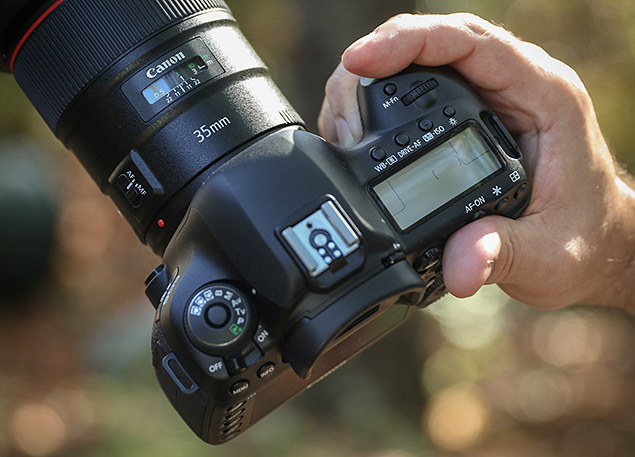 |
Classic, familiar 5D-series styling with modern refinements
Canon's classic 5D-series undergoes its fourth revision, bringing a host of important new features and upgrades, but without totally reinventing the wheel. It's still the familiar 5D camera that professionals and enthusiasts alike know and love, and we think that's great. Aimed at professional and advanced enthusiast photographers and videographers, the familiarity of the 5D-style camera is a welcomed aspect, as it lets them just pick up the camera and go without any steep learning curve.
Design-wise, there are few notable changes, the primary one being the inclusion of a touchscreen -- a first for a 5D series camera. Like other touch-enabled Canon cameras we've tried, the 5D IV's works really well; it's fast and responsive and works great for tapping to adjust the focus point if you're framing shots with live view or shooting video. The menu system and Quick Menu are also now fully touch-enabled, and while the menu GUI hasn't changed to accommodate finger-sized navigation, it wasn't frustrating to use, in our experience.
And while the body design is similar, it's different enough to necessitate a new battery grip. You can't just use your old 5D Mark III grip, so keep that in mind when budgeting for the new Mark IV.
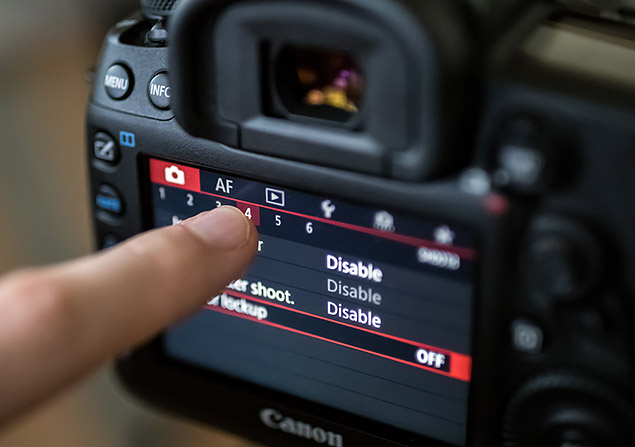 |
Higher-res photos, better dynamic range, and great high ISOs
With an upgraded 30-megapixel full-frame sensor, the 5D Mark IV gains a noticeable, but not extreme, bump up in resolving power. For the ultimate in resolution from a Canon DSLR, you'll still need to jump to the 5DS or 5DS R models. With the 5D IV, a camera aimed at variety of use-cases, from wedding and photojournalism to portraiture and landscapes, 30MP is a great balance between resolution, manageable file sizes and a camera that can still fire off shots at a decent burst rate.
In our testing, the Canon 5D Mark IV performed as expected in the image quality department, with an overall superb showing, especially with RAW files. The 30MP images displayed lots of fine detail, but straight-from-camera JPEGs tended to be a little on the soft side, whereas RAW files could easily be developed to show greater detail. As we've seen with other Canon cameras, the 5D IV's hue and overall color accuracy are top-notch, and its high ISO performance is also excellent, as we'd expect from a pro-class, full-frame DSLR. Compared to the earlier 5D Mark III, the Mark IV displays much better dynamic range, which is great to see -- a welcome improvement for the landscape photographers out there.
One of the major new features touted by Canon with the new 5D IV is Dual Pixel Raw, a new image capture mode that basically records two images simultaneously using the sensor's Dual Pixel design. After capture, users can then subtly tweak focus ever-so-slightly, as well as make other micro-adjustments to bokeh and reduce ghosting. These micro-adjustments, however, are so micro that it's not really worth the hassle for all but the most critical of applications, especially given the costs, such as the increased file size and the drop in buffer capacity.
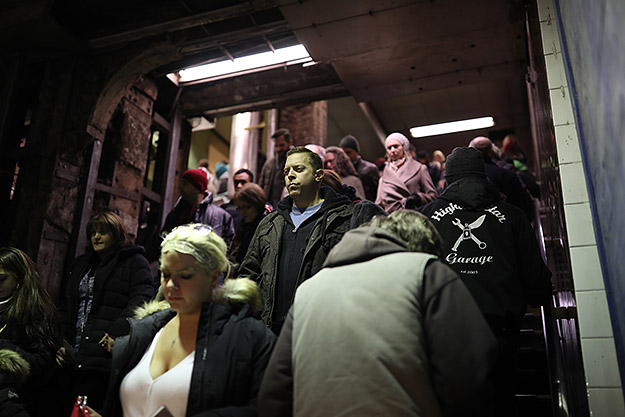 |
35mm f/1.4L II: 35mm, f/1.4, 1/500s, ISO 2000
|
Quick, responsive performance makes the 5D IV a versatile DSLR
Although the 5D Mark IV is not necessarily designed as an action-sports camera with super-quick sequential shooting rates like on the 1D X Mark II or 7D Mark II, the 5D IV is still a very responsive camera with little apparent lag. Canon spec-ed the Mark IV for up to 7fps continuous shooting, and in our testing, the camera matched that rate perfectly. While 7fps isn't the fastest burst rate out there, it's quite fast for a high-res full-frame camera. Buffer performance was also very impressive, with practically unlimited JPEG shooting using our ultra-fast CF card. When shooting RAW or RAW+JPEG, you'll run into a buffer limit, however, at around 19 frames for RAW or 12 frames for RAW+JPEG. Opting for Dual Pixel Raw mode, however, which nearly doubles the size of the image file, will knock the buffer capacity down even further, so we don't recommend that mode for any sort of action shooting scenarios.
 |
70-200mm f/4L IS: 200mm, f/4.5, 1/640s, ISO 6400
|
Autofocus performance is also very good and up-to-snuff for a professional-class DSLR. Offering an updated 61-point AF system with wider AF point coverage, both single-shot AF and continuous focus is great. Even with difficult subjects, such as with indoor college-level basketball, the 5D Mark IV was able to keep up without issue. The 5D IV also offers Dual Pixel CMOS AF for live-view focusing, which as we've seen with other Dual Pixel Canon models, works very well. Live View AF is nearly instantaneous for stationary subjects and also works great for video recording.
4K video finally comes to the 5D-series, but its tricky to use
The 5D Mark II was perhaps the biggest contributor to the rise of DSLR video, and with the Mark IV, we see a major upgrade in video capabilities, including Cinema 4K video at up to 30fps. Full HD video is there too of course, up to 60p, while 720p video can crank up to 120fps. Overall, the 5D Mark IV offers a range of video features, appropriate for casual videographers as well as more advanced cinematography workflows.
There is a noticeable downside, however, regarding 4K video, and that's the codec used: Motion JPEG. While this allows for very high-quality footage (which does, in fact, look great), the file sizes are huge, and the inherently high bitrate of around 500Mbps can really bog down even quite powerful computers. We had trouble with smooth video playback of 4K footage even on fairly modern, quad-core, nearly maxed-out computers. Also be aware there is a 1.64x crop factor for 4K video capture relative to the full width of the sensor, while Full HD and HD modes use the entire width of the sensor.
As mentioned, 4K video looks great, with tons of fine detail and great colors, even up to higher ISOs around 6400, but it's definitely worth a thought as to whether or not you need 4K before you hit 'record.'
| Canon 16-35mm f/4L IS: 16mm, f/5.6, 1/500s, ISO 100 |
Summary: The familiar yet refreshed Canon 5D Mark IV is a top-notch, all-around professional DSLR
Performance-wise, the 5D IV earns the high marks in all the areas we expect from a pro-level DSLR. The increase in image resolution is a nice upgrade, bringing the 5D Mark IV more in-line with a number of competing full-frame cameras. Image quality, at both low and higher ISOs, is great, and the camera is nimble and responsive with fantastic autofocus. For still photography, the 5D Mark IV is undoubtedly a highly versatile camera that's capable of shooting a variety of subject matter in all sorts of lighting conditions.
On the video side, the 5D Mark IV comes as one of the most fully-featured Canon DSLRs for videographers. Video quality is excellent, and the Dual Pixel CMOS AF makes focusing easy and smooth for both still and moving subjects. 4K video is a fantastic, much-requested feature, and while it looks fantastic, the codec does make it tricky to work with after the fact.
Overall, while it looks like a 5D Mark III, the design of this new model is refined, well thought-out, and most of all familiar, which to a seasoned professional is exactly what he or she wants and needs. They need a tool, and the 5D Mark IV is an excellent one, for photography as well as for video. The Canon 5D Mark IV doesn't throw any surprises, other than perhaps being surprisingly satisfying. It's a reliable, durable and capable workhorse camera -- exactly what a professional needs.
Given that the Canon 5D Mark IV earned a top-spot as our pick for Best Professional DSLR of 2016 in our Camera of the Year Awards, it's obviously a shoe-in for a Dave's Pick!
Pros & Cons
- Very good image quality, excellent from RAW files
- Excellent high ISO performance
- Very good dynamic range, much improved over its predecessor
- Excellent color accuracy
- Quick startup and mode switching
- Low shutter lag
- Swift autofocus
- Fast 7fps burst speed for a full-frame camera
- Unlimited JPEG buffer
- Decent RAW buffer considering speed and resolution
- Dual Pixel CMOS AF offers much better Live View and movie autofocus than most DSLRs
- Dual Pixel RAW lets you make minor adjustments to focus, bokeh and ghosting in post
- DCI 4K (4096 x 2160) video at up to 30fps
- 4K video is excellent with very bitrate quality (but see Con)
- Can save still frames form 4K videos
- Dual card slots (but see Con)
- Built-in Wi-Fi with NFC
- Built-in GPS
- USB 3.0 port
- Microphone and headphone jacks
- Good battery life
- Bright, accurate viewfinder
- Comfortable, familiar design
- Rugged, weather-sealed build
- Default JPEGs are a bit soft compared to competitors
- Dual memory card slots use different formats
- Top flash speed of 1/200s
- Low-light AF a bit disappointing with low-contrast subjects
- 4K video is cropped by 1.64x relative to the full width of the sensor
- 4K videos can be difficult to playback smoothly due to high bitrate and Motion JPEG codec
- 29:59 continuous video recording limit

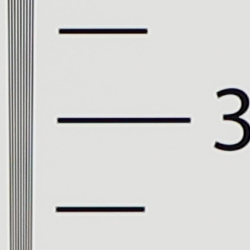
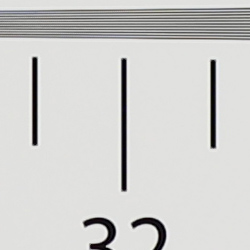
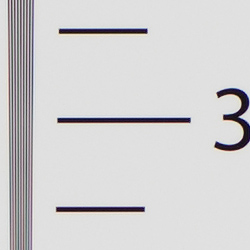
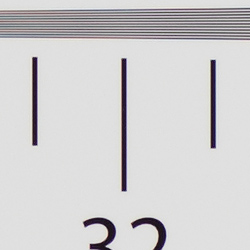

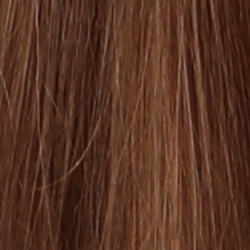
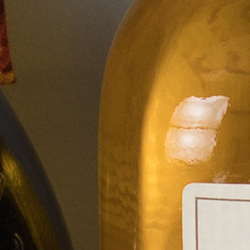

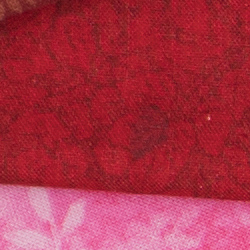






















































































































No comments:
Post a Comment